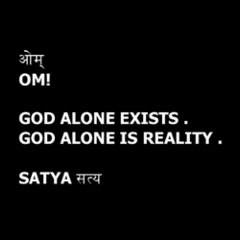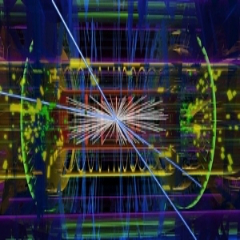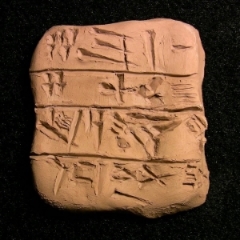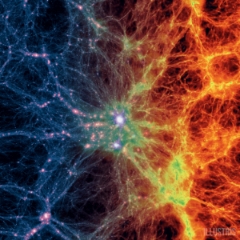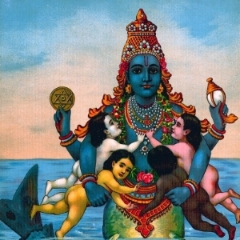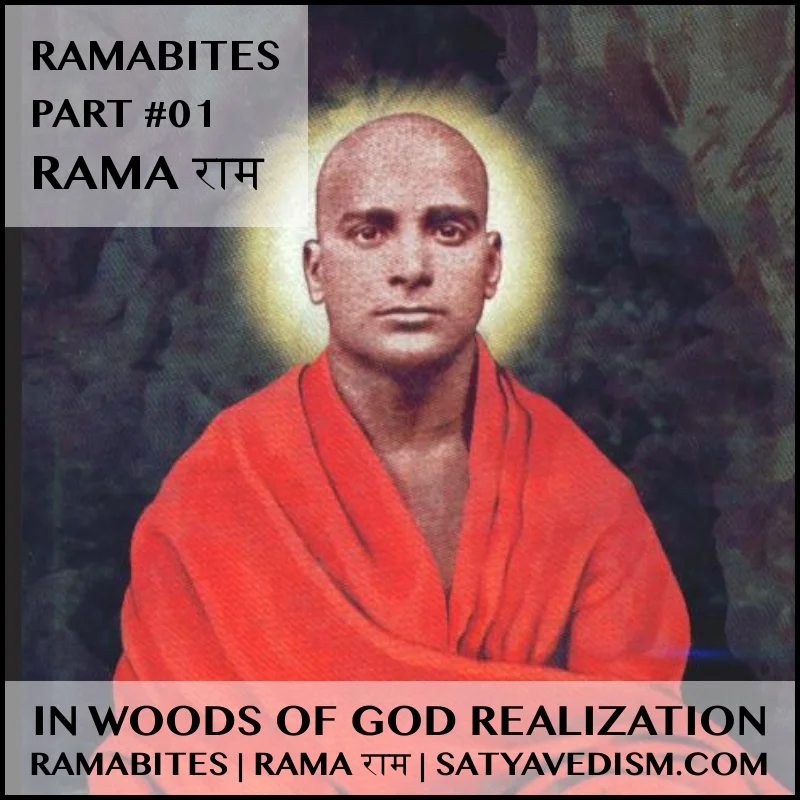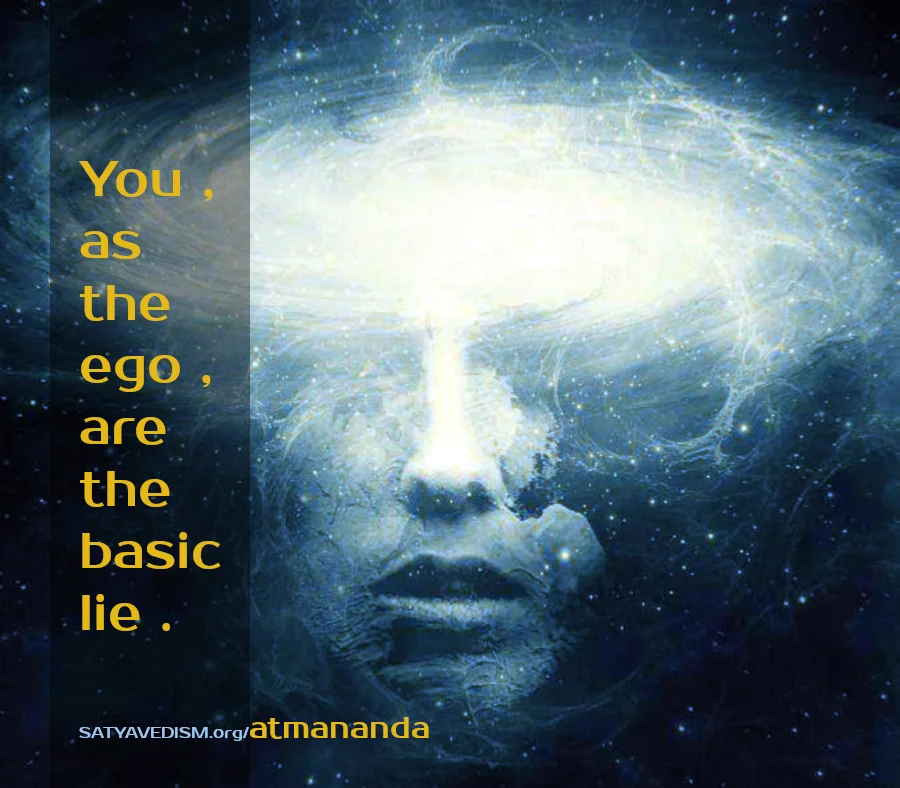CHANDOGYA UPANISAD | 3.14.1 | AMOETD
| | homeCHANDOGYA UPANISAD | 3.14.1 | SRI ADI SANKARACARYA
Sarvam khalvidam brahma , tajjalaniti santa upasita , atha khalu kratumayah puruso yatha-kratur-asmin-loke puruso bhavati tathetah pretya bhavati , sa kratum kurvita || 3.14.1 ||
|| VERSION 1 ||
1 . All this is Brahman . ( This ) is born from , dissolves in , and exists in That . Therefore , one should meditate by becoming calm . Because a person is identified with ( one's ) conviction , ( therefore ) just as the conviction a person has in this world , so does one become after departing from here . Therefore one should shape one's conviction .
|| BHASYA || : Again , of that very Brahman — which is three-footed , immortal , possessed of infinite qualities , possessed of infinite powers , and is to be meditated on in diverse ways — , the text now wants to enjoin a meditation on It as possessed of special qualities and powers .
Sarvam , all ; — khalu is an indeclinable word used here for embellishment of the sentence — ; idam , this , this world diversified through names and forms , ( and ) which is the object of direct perception etc has Brahman as its origin . The word Brahman derivatively means that which is the oldest . How can all be Brahman ? Therefore , the text says , ' Tajjalan ' : — Because all ( creation ) , through a succession of fire , water , food , etc is born from that Brahman , therefore it is called ' tajja ' ; and it is ' talla ' because , through a reverse process of that very order of birth , it gets merged in that very Brahman , becomes wholly identified with that ; ( and it is ' tadana ' because ) it continues to live , to function on that very Brahman during the state of ( its ) existence . Thus , the world , in the three states , is non-different from Brahman because it is not perceived apart from It . Therefore this world is surely That itself .
Further , since all this is Brahman , therefore , upsasita , one should meditate on Brahman which is all ( this ) , as possessed of the qualities that will be stated ; santah , by becoming calm , by becoming self-controlled , free from attachment , aversion , etc . How should one meditate ? Kurvita , one should shape ; kratum , one's conviction , determination , a firm belief that this is such only and not otherwise . The words , ' One should shape ( one's ) conviction ' , has to be connected with the remote words , ' One should meditate on ' * .
What again , is the purpose to be served by shaping the conviction ? Or how is it that conviction to be shaped ? The text starting with atha ( khalu ) , because , etc is meant for establishing how the shaping of the conviction is a means for the attainment of the desired result . The words atha khalu are used in the sense of ' because ' . Because , purushah , a person ; is kratumayah , identified with the kind of conviction that one entertains ; ( therefore ) yathakratuh purushah bhavati , just as the conviction a person has , just as the sort of conviction one entertains ; asmin loke , in this world , while living here ; tatha , so ; bhavati , does one become ; itah pretya , after departing from here , from the body , ( ie ) after death .
The idea is that one becomes identified with the result that accords with one's conviction . For thus is it found in the scripture: ' With whatever ideas in one's mind , a person leaves one's body at the end ' ( BG . VIII . 6 ) , etc .
Since this is the procedure found in the scriptures , therefore , one , having this knowledge , should shape one's conviction ( after ) the conviction that we shall speak of . Thus , since on the authority of the scriptures it becomes reasonable that the result accords with the conviction , therefore , that conviction has to be shaped . How ?
( Note : * The connection between the two portions is explained by Ananda-Giri by saying that the meditation is to be carried on till it takes the form of such a conviction . )
|| VERSION 2 ||
Sarvam khalvidam brahma , tajjalaniti santa upasita , atha khalu kratumayah puruso yatha-kratur-asmin-loke puruso bhavati tathetah pretya bhavati , sa kratum kurvita
|| 3.14.1 ||
1 . All this indeed is Brahman , as it originates , becomes absorbed and lives in It ; one should meditate upon It calmly . Now , really , the Human consists of Volition ; according as one's Volition is in this world , so does one become on departing from here ; hence one should exercise Volition .
|| BHASYA || : All , — the whole of — this , indeed , — this last term is an indeclinable particle introduced as an ornament of speech , — ie the whole of this world , differentiated in name and form , as apprehended by sense-perception and other means of cognition , is Brahman , the original source , called ' Brahman ' on account of its being the highest . — In answer to the question ' In what way is all this Brahman ? ' it is added : As it originates , becomes absorbed and lives in It ; all this world has come out of Brahman , gradually , through light , food etc , hence it is said to originate in It ; — similarly in the same order of coming out , but reversed , the world becomes absorbed in the Brahman becoming one with it ; hence it is said to become absorbed in It ; — similarly while the world continues to exist , it lives , moves , operates , in that same Brahman ; hence it is said to live in It . — Thus at all three points of time , the world remains in the Brahman , undifferentiated from It , — as is clear from the fact that it is never perceived apart , from It . — From this it follows that , all this is Brahman .
In what way this is the same One without a second , we shall explain in detail under Discourse VI . — Inasmuch as all this is Brahman , one should meditate upon that universal Brahman , through the qualities that are going to be described , — calmly , — ie free from all love and hate and self-controlled .
In what way should this meditation be carried on ? — One should exercise Volition ; Volition is certain cognition , determination , the decision that this shall be so , not otherwise , — this one should exercise ; ie thus should one meditate , this being construed from the preceding sentence — Question : — ' What is the purpose to be served by this exercising of Volition ? — How too should this Volition be exercised ? How too is this exercising of Volition to accomplish the desired purpose ? ' — In answer to all this , we have the next sentence — Now really etc , etc . Because the human consists of Volition , — ie the Jiva , the individualised self , is entirely what one's Volition is , — ie one's nature consists of one's volition ; that is , one is as one's Volition is — this is what is meant by one's consisting of one's Volition . According as one's Volition is in this world , — ie according as one's volition , determination , is while one is living in this world , — so does one become on departing from here , — ie on one's departure from the body , ie on death .
What is meant is that one's condition is in accordance with the character of one's Volition . This idea is found to be thus expressed in the scriptures ; — ' Thinking of whatever form , does the person renounce one's body ( to that does one attain ) ' — ( Bhagvadgita ) .
Inasmuch as such is the conclusion found in the scriptures , the person , knowing all this , should exercise one's Volition , perform meditation , — that form of meditation which we are going to describe ; because it is learnt from the scriptures that results accrue to one in accordance with one's Volition , therefore the said exercise — of meditation , — should be performed .
|| UPADESA SAHASRI : A METHOD OF ENLIGHTENING THE DISCIPLE || I.I.6 || COMPLETE AMOETD SERIES ➤➤ | INTRODUCTION ➤➤ ||
|| THIS SCRIPTURE SERIES SOURCE || ➤
|| 1 || http://www.SATYAVEDISM.com ||
|| 2 || http://bit.ly/SRIADISHANKARA ||
http://www.SATYAVEDISM.com/shankara/amoetd/
SOURCE | SATYAVEDISM.ORG











